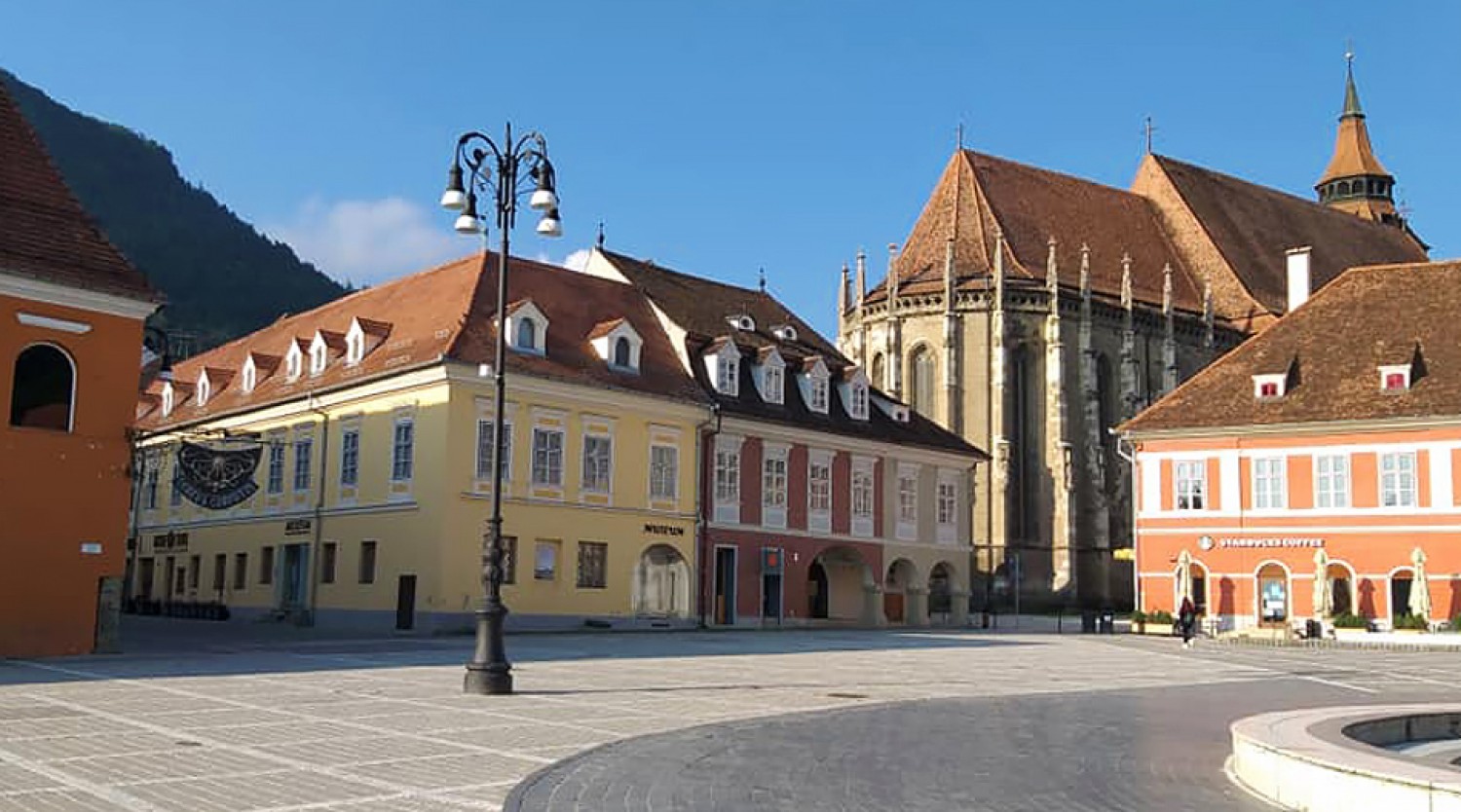Museum of Urban Civilisation of Brașov
15 Sfatului Square, Brașov, Brașov County

The Museum of Urban Civilisation of Brașov is the newest branch of the Ethnographic Museum of Brașov and it operates in an important monument of civil architecture, representative of the typology of commercial and private living space in Transylvanian cities between the 16th and 19th centuries.
The museum was inaugurated in 2009, the culmination of a complex restoration process that began in 1993. The layout of the museum has taken into account the original functionality of the interiors, illustrating both the specific activities of a commercial town and the way in which the inhabitants of Brașov lived.
Archaeologically attested since the XIII-XIV centuries, being located in the enclosure of the old fortress of Brașov, the building with windows and doors with stone frames and vaults with penetrations reveals specific Renaissance construction aspects, being rebuilt in 1566, dating discovered on a stone frame during recent research.
The museum is designed vertically, chronologically, so that the 17th century is represented in the basement, the 18th century on the ground floor and the 19th century upstairs. The attic is used for temporary exhibitions.
Archaeologically attested since the XIII-XIV centuries, being located in the enclosure of the old fortress of Brașov, the building with windows and doors with stone frames and vaults with penetrations reveals specific Renaissance construction aspects, being rebuilt in 1566, dating discovered on a stone frame during recent research.
The museum is designed vertically, chronologically, so that the 17th century is represented in the basement, the 18th century on the ground floor and the 19th century upstairs. The attic is used for temporary exhibitions.
The museum's permanent exhibition captures aspects of urban life in the 17th-19th centuries, including a cellar for storing goods, a trading space, a spice room, a parlour with the Saxon patriciate, a children's room, an embroidery and hat workshop, and a 19th-century photography studio. The attic is dedicated to temporary exhibitions.
The Museum of Ethnography Brașov is dedicated to the regional ethnology of south-eastern Transylvania, illustrating through its valuable heritage the civilisation of the rural community in the ethnographic areas of Bran, Rupea, Țara Oltului, Valea Hârtibaciului, Țara Bârsei. The museum was established in 1990, continuing the work of the ethnography section (established in 1967) of the Regional Museum of Brașov, a museum formed in 1950 by bringing together the collections of the Saxon Museum of Țara Bârsei and those of the Museum of the ASTRA Cultural Association. The patrimony of the Ethnographic Museum of Brașov is on display today in the headquarters in Brașov, as well as in the branches in Săcele and Rupea. The Ethnographic Museum of Brașov holds original and authentic museum collections on the rural civilisation of the Romanians, Saxons and Csangas of south-eastern Transylvania.
The Museum of Ethnography Brașov is dedicated to the regional ethnology of south-eastern Transylvania, illustrating through its valuable heritage the civilisation of the rural community in the ethnographic areas of Bran, Rupea, Țara Oltului, Valea Hârtibaciului, Țara Bârsei. The museum was established in 1990, continuing the work of the ethnography section (established in 1967) of the Regional Museum of Brașov, a museum formed in 1950 by bringing together the collections of the Saxon Museum of Țara Bârsei and those of the Museum of the ASTRA Cultural Association. The patrimony of the Ethnographic Museum of Brașov is on display today in the headquarters in Brașov, as well as in the branches in Săcele and Rupea. The Ethnographic Museum of Brașov holds original and authentic museum collections on the rural civilisation of the Romanians, Saxons and Csangas of south-eastern Transylvania.